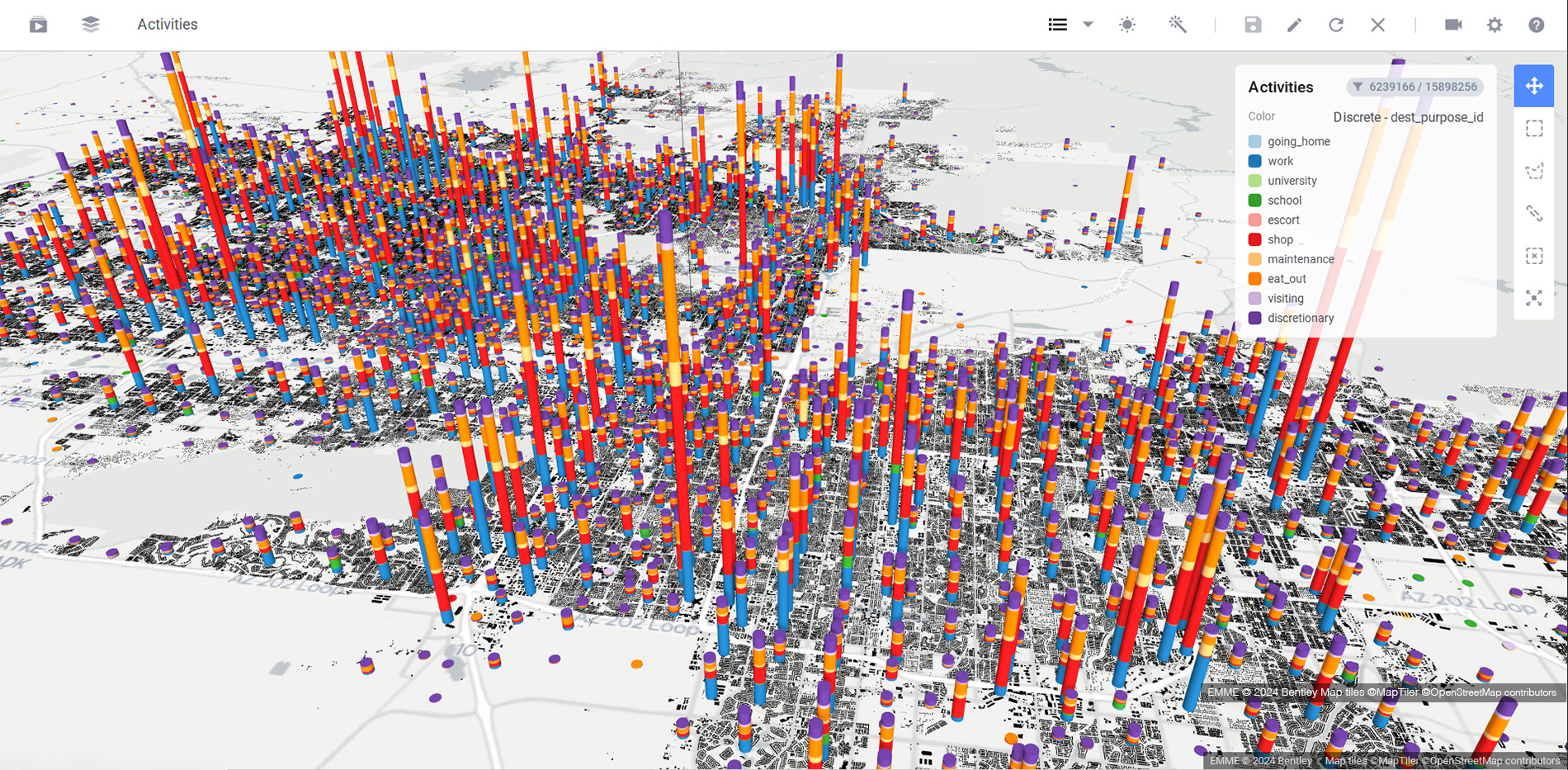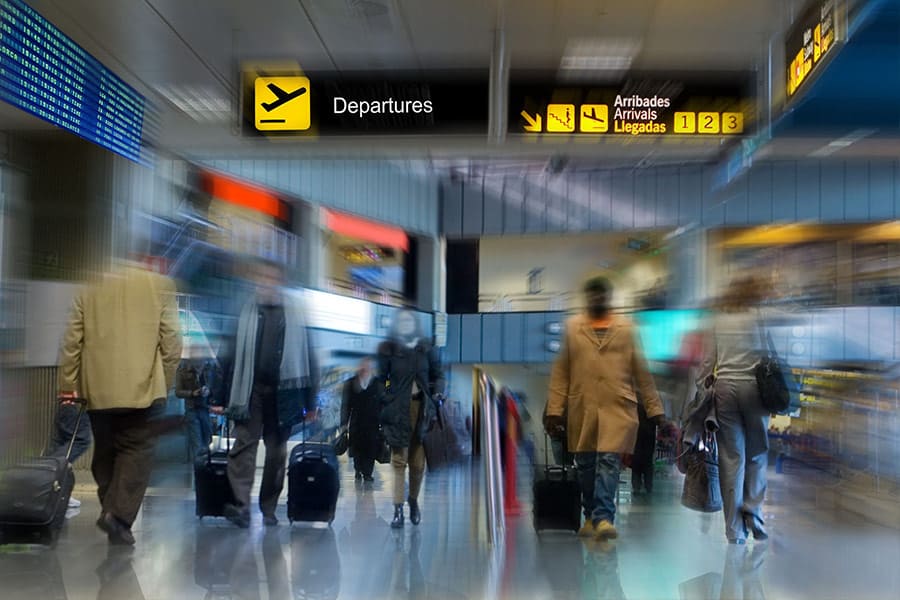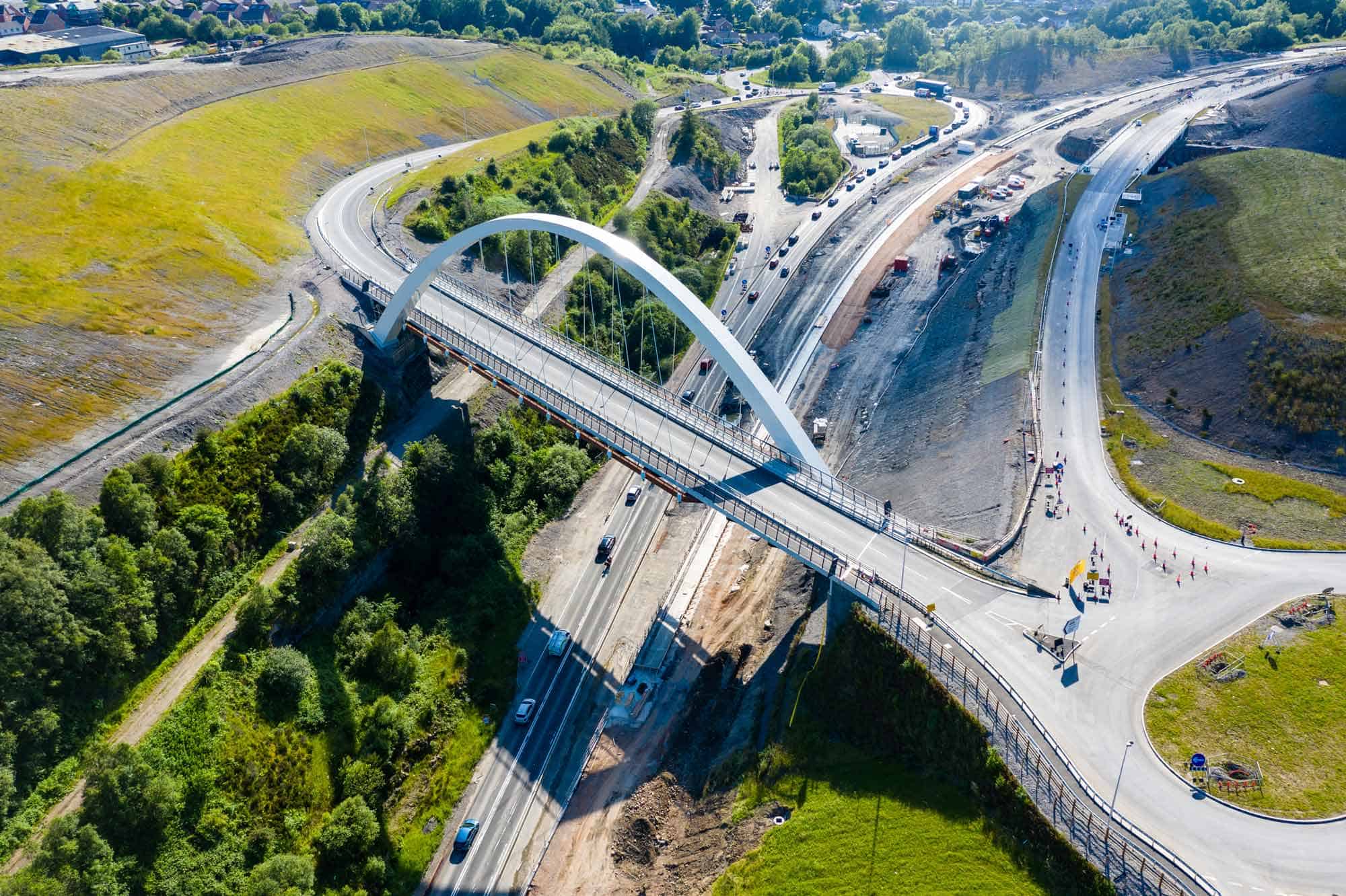Travel demand modeling is a method used by transportation planners and engineers to estimate and predict how people travel within a region—now and in the future. It is essential for planning and managing transportation systems, but creating a travel demand model can be quite complex and time-consuming. Recently, we reached out to modelers from WSP, Jacobs, and the City of Edmonton, who shared their experiences automating their travel demand modeling calibration processes, making them simpler and more efficient.
What is Automated Calibration?
Traditionally, calibrating a travel demand model involved manually adjusting model parameters, such as how likely someone is to take a transit or how long a trip takes. This process ensures the model outputs align with real-world mobility data including traffic counts or transit ridership. This process could take several months and requires deep expertise.
Automated calibration streamlines this process by:
- Simultaneously adjusting multiple model coefficients across the entire system.
- Using optimization algorithms to minimize the difference between model outputs and observed data.
- Incorporating diverse data sources including origin-destination (O-D) matrices, traffic counts, transit ridership, household travel surveys, and big data sources (e.g., GPS traces, mobile phone data).
In tools like Bentley OpenPaths, automated calibration allows modelers to fine-tune their travel demand models by using real-world data. By setting calibration targets based on these data sources, the software automatically adjusts the model parameters to better match these targets, saving time and improving accuracy.
How is Automated Calibration Being Used?
Here’s what officials from WSP, Jacobs, and the City of Edmonton experienced when they took advantage of automated calibration features. In each case, the demand models were either developed directly in Bentley OpenPaths or re-platformed within Bentley OpenPaths.
Q: In what kinds of models did you apply automated calibration?
WSP: We have been using automated calibration extensively in the development of two activity-based models (ABMs) for sizable metropolitan regions. Both models are loosely based on the well-known and widely adopted “CT-RAMP1” ABM structure. One model has been configured similarly to the Atlanta Regional Council (ARC) ABM, while the other has been slightly simplified to exclude joint travel.
Jacobs: In the U.K., we have applied automated calibration to two different models already. One of the models is a new trip-based model, incorporating all modes of transportation for a medium-sized city. This model also implements an incremental model which “pivots” off observed base-year demand. The second demand model was replatformed to unify demand modeling across the existing model system, which incorporates four or five different regions or components.
City of Edmonton: Our travel demand models have three components: a personal travel model, a commercial vehicle model, and an external traffic model. We are using the automated calibration process to update the personal travel demand model, which is a heavily segmented tour-based model originally calibrated against the 2015 household travel survey data. Conditions have changed significantly since then and we are seeing more remote and hybrid workers. We have tested whether we can leverage post-COVID data to help calibrate new travel patterns.
– Read a detailed case study on how the City of Edmonton developed an advanced model to track residents’ movement amid rapid population growth using Bentley OpenPaths.
Quotes from the modelers:
“We were impressed, and we’d like to use it for other projects… it simplifies the process of matching calibration targets, reducing the need for manual parameter adjustments. It serves as a diagnostic tool, allowing us to identify and address errors quickly, which ultimately benefits our model calibration efforts. – Ian Siviter, Associate Director of Transport Planning, Jacobs
Q: What data did you calibrate to, and how did it work?
WSP: In both models we are using automated calibration to tie together disparate data sets. We’ve made extensive use of targets from household travel survey data, for example, auto ownership, mode choice, trip length distribution, and trip frequency. We configure this step-by-step so that we can run a recalibration including all upstream model steps whenever we add a component. This allows us a systematic way to reflect on the realized model response, and, if required, to revisit prior steps. For example, it is essential to get long-term choices like car ownership right before moving on to other steps, or you’re not going to get the intended response. The automated calibration lets us easily revisit or update priors when needed.
Jacobs: We used automated calibration to match mode share targets by different areas, and also to match park-and-ride demand from surveys across bus and rail facilities, ensuring the correct number of trips for each classification. In another model, the calibration was actually used in forecasting mode, so we could maintain active travel assumptions into the future against a range of various fuel pricing and transit fare scenarios. We have not yet incorporated travel time distribution into the calibration, but we have interest to do so. Calibration runs were relatively straightforward; they completed in five or ten iterations.
City of Edmonton: The current traffic counts and transit ridership data, along with the original 2015 household travel survey data, were used as targets in the automated calibration. The count data has been processed so we can incorporate it for time-of-day calibration. Transit data includes ridership and boarding data. By using the automated calibration procedure, we were able to update the model to reflect post-COVID travel behavior, including reduced transit mode share, increased work-from-home, and related travel patterns. After we tested the calibration using initial land use data, we revised population and employment at the traffic zone level, and we were able to quickly rerun the automated calibration to incorporate the changes. Previously, we would not have been able to do this in a short period of time.
Quotes from the modelers:
“The value of the automated calibration tool is that it’s also kind of a diagnostic. It allows us to see the errors a lot quicker. We don’t need to slice and dice the data or write scripts to do all that. The calibration targets do most of that work for us.” – Brian Cheung, Project Manager, WSP Canada
Q: What were your overall findings? How does automatic calibration change how you think about calibrating models?
WSP: It’s been really helpful to identify issues more quickly. Now, if we find an error early in the model, it is no longer fatal, and we can actually try to address it with a re-calibration. Previously this would have been onerous, and we are always operating on a limited budget. With all the automated calibration targets, we can now validate models across more segments in more dimensions. With manual calibration, you are really just looking at only one angle at a time. It is also empowering for our clients, especially to be more fault-tolerant of data changes late in the modeling process.
Jacobs: We were impressed, and we’d like to use it for other projects. Previous approaches, which involved various combinations of runs, spreadsheets, and trying to estimate various parameters, were really all a bit painful. With automated calibration we can increase the frequency with which we can update models. We think Bentley OpenPaths AGENT is really modern, and you can set things up easily.
City of Edmonton: The automated calibration process has been very interactive, and the interface is explanatory. We can see what is going in the calibration report to understand the changes that are being made. We never imagined that calibrating directly from link counts would be possible, but we are still learning, especially with O-D targets estimated based on traffic counts. In the future, this gives us more confidence to be able to provide more frequent model updates in-between travel survey updates, and to more quickly incorporate updates from our new continuous household travel survey program.
Quotes from the modelers:
“The automated calibration tool is very interactive and intuitive. It prepares calibration reports that allow us to see changes from loop to loop, making the process more transparent and easier to understand… In the future, this gives us more confidence to be able to provide more frequent model updates” – Rajib Sikder, Project Engineer, City of Edmonton
About Bentley OpenPaths
Bentley OpenPaths is Bentley’s multimodal transportation planning software, including the well-known Bentley OpenPaths CUBE, Bentley OpenPaths EMME, Bentley OpenPaths DYNAMEQ, Bentley OpenPaths CityPhi, and Bentley OpenPaths AGENT applications.
Bentley OpenPaths AGENT includes everything needed for modern travel demand modeling, including a population synthesizer, demand modeling framework, user interface (UI), and APIs for automation. Bentley OpenPaths AGENT supports virtually any travel demand model structure in a single platform, including activity-based, tour-based and trip-based model structures.
Can your travel demand modeling software keep up with changing travel patterns? Learn more in the Bentley OpenPaths AGENT e-book.







